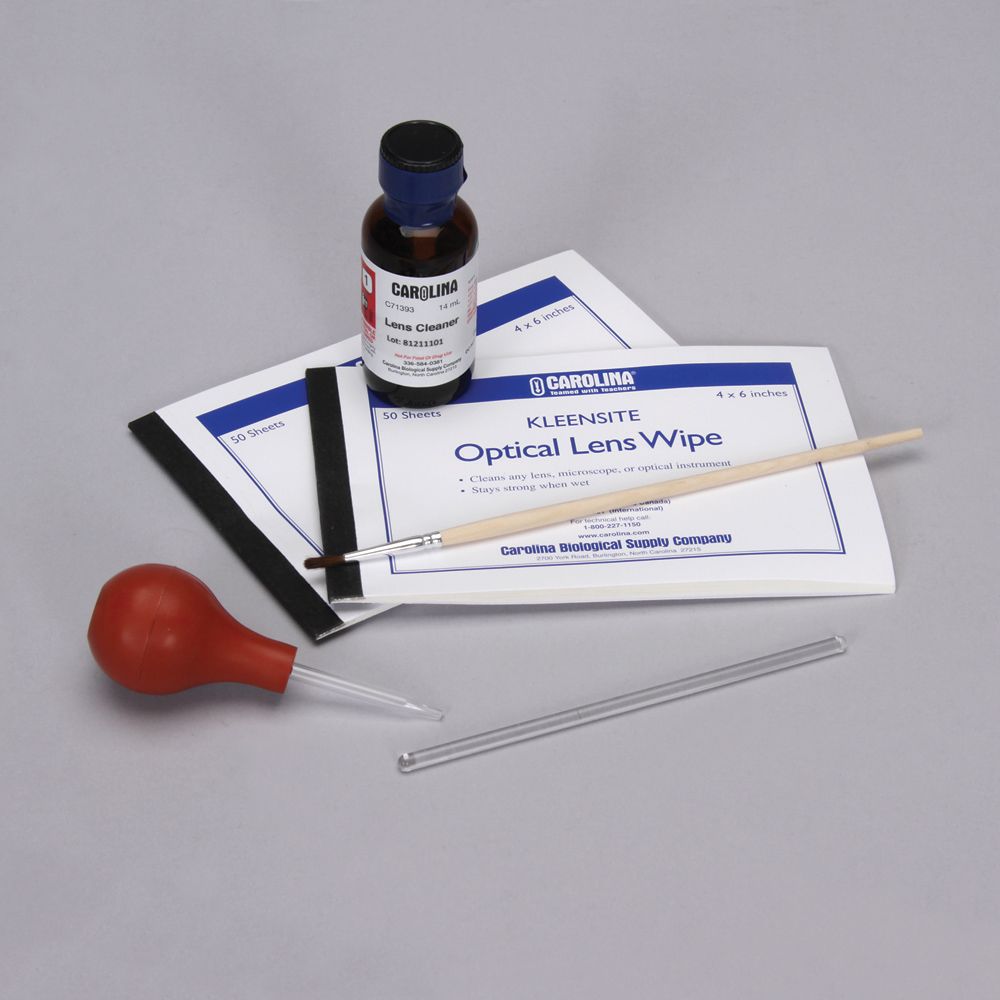Are your microscopes dusty and getting dustier? Are there smears across new, clean slides? Do parts seem loose? Use these simple tips to keep your scopes clean and in tip-top condition all year long.
Dust and debris are the number one issue resulting in poor quality microscope viewing. Dust covers will help. Occasional cleaning of the scope body and optics will help keep high quality viewing. Dust can never be eliminated. New scopes will have some dust already in them. Liquids and oils are also big contributors to damage and poor viewing.
Packaged with your scope you should find:
- Tool Set - For any future service needs.
- All Parts - Ensure that everything on the microscope is firmly in place. Hand-tighten, or use the appropriate included tool if needed, to secure the eyepiece tube, objectives, and illuminator cover. With a screwdriver, tighten the rubber feet on the base.
Microscope Cleaning & Care
Body
Remove dirt and grease from the microscope body with a moist paper towel. Products on the market that will help you keep your microscopes clean and dust-free are dust brushes, cans of air, lens tissue, and cleaners. Cleaners should be nonabrasive, and alcohol based.
Power Cord or Rechargeable Batteries
Eyepiece Lenses
Clean the eyepieces after each session to prevent fingerprints and smudges from remaining on these glass surfaces. Using soft, circular pressure, clean each eyepiece lens with cleaning solution and lens paper or a microfiber cloth.

Objectives
The 4× and 10× objectives shouldn’t require much cleaning, but the 40× and 100× will. When the scope has been subjected to liquid specimens, you may need to remove the objective lens and view through it to see what is blocking the light and preventing a quality image. Gently clean the outer objective lens using lens cleaner and lens paper or a cotton-tipped swab. Clean the 40× and 100× objectives especially after using immersion oil or making wet mounts. Use only liquids specified for optical use on the eyepieces, objectives, and condenser.
Other Parts
Stage Drift
If microscopes drift out of focus, locate the adjustment collar on the inside of the coarse-focus knob (usually on the left side). Tighten the collar with a clockwise turn using the “C wrench” supplied with your microscope.
Floppy Stage Clips
Dustcover

Tips
Did you know that an empty micropipettor tip box makes a great microscope kit box? Fill it with toothpicks, tweezers, coverslips, slides, cotton, transfer pipettes, and lens paper. It keeps everything neat and handy. For a detailed guide to your microscope, download our helpful microscope infographic.
Microscope Resources

Teacher’s Guide to Microscopes
Teacher’s Guide to Microscopes Are you planning to purchase some new microscopes to replace old ones or to meet the needs of increased enrollment? If

How to Use a Student Compound Microscope
How to Use a Student Compound Microscope By Monty Clayton Purchasing a microscope is an educational investment. When you properly use and care for it,

Microscopes
Doing more with your Microscopes Explore activities, guides, and support tools to make the most out of microscopes in your classroom labs. learn more We

How to Use a Microscope
Microscopes grant us the extraordinary ability to closely examine the intricacies of the world. Becoming familiar with their diverse components and functionality enables you to

Popular Microscope Slide Sets by Course
Popular Microscope Slide Sets by Course With so many options available, choosing the right microscope slides for your lab can be overwhelming. To make the

Ultimate Lab Basics Buying Guide
Let Carolina help you select the proper materials and quantities needed for your classroom or laboratory. Carolina has been a leader in science education materials







